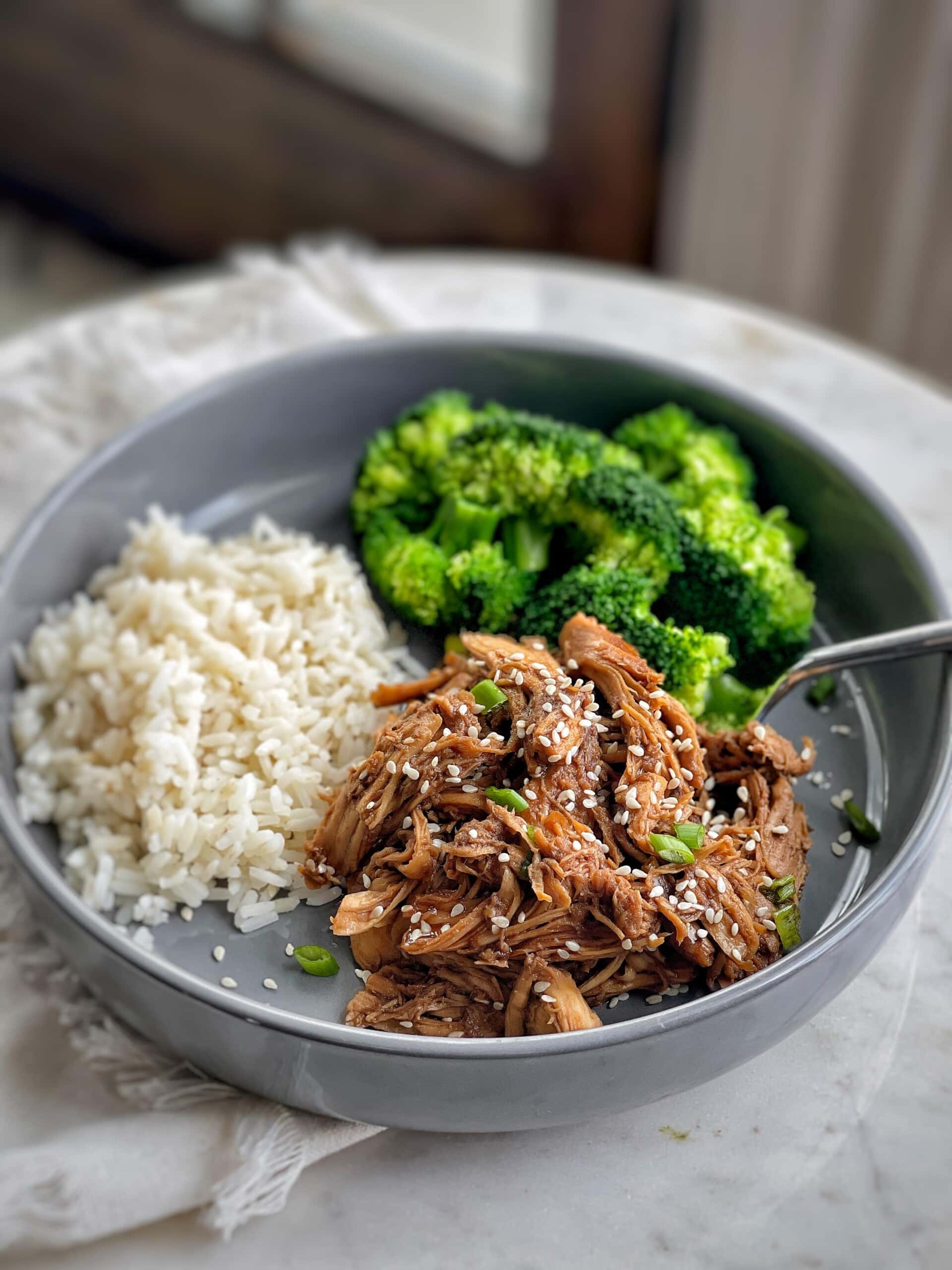Healthy slow cooker chicken recipes for weight loss are carefully crafted dishes designed to support fat loss while providing balanced nutrition. Using lean chicken as the main protein source, combined with nutrient-rich vegetables, herbs, and minimal added fats, these recipes are ideal for Americans aiming to manage weight naturally.
Slow cookers (or crockpots) allow food to cook slowly over hours, preserving nutrients and enhancing flavors without the need for heavy oils or frying. This method aligns perfectly with weight management because it reduces reliance on calorie-dense cooking methods and encourages portion-controlled meals.

The Science Behind Chicken for Weight Loss
Chicken, particularly breast meat, is a high-protein, low-fat option that promotes satiety and preserves lean muscle mass during caloric restriction. Protein intake has been shown to increase thermogenesis—the energy your body burns during digestion—and reduce appetite-regulating hormones, helping with weight control.
Slow cooker meals allow for nutrient-dense vegetables and whole grains to be integrated, increasing fiber content. Fiber not only supports gut health but also slows glucose absorption, reducing blood sugar spikes and managing cravings.
Key mechanisms:
-
Appetite control: High-protein slow cooker chicken meals keep you fuller for longer.
-
Metabolic support: Protein-rich foods modestly increase daily energy expenditure.
-
Fat oxidation: Balanced meals with lean protein and vegetables can help favor fat metabolism.
-
Digestive health: Slow-cooked vegetables enhance fiber intake, supporting healthy digestion and gut microbiota, which research links to weight management.
Evidence-Based Benefits of Slow Cooker Chicken for Weight Loss
While there are no studies specifically on “slow cooker chicken for weight loss,” research supports the role of lean protein and fiber-rich diets in fat loss:
-
High-protein diets can reduce body weight and preserve lean mass in adults (Journal of Nutrition, 2015).
-
Meal prepping with slow cooking improves adherence to healthy eating patterns by providing convenient, ready-to-eat options, reducing reliance on high-calorie convenience foods.
-
Vegetable-rich meals enhance micronutrient intake and may help regulate hunger hormones like ghrelin.
Practical Recipes: Delicious & Low-Calorie Options
1. Slow Cooker Lemon Garlic Chicken
Ingredients:
-
4 boneless, skinless chicken breasts
-
2 cups low-sodium chicken broth
-
Juice of 1 lemon
-
3 garlic cloves, minced
-
1 tsp dried oregano
-
Salt and pepper to taste
Instructions:
-
Place chicken in the slow cooker.
-
Pour broth, lemon juice, and garlic over the chicken.
-
Sprinkle oregano, salt, and pepper.
-
Cook on low for 4–5 hours.
-
Serve with steamed broccoli or quinoa for a balanced meal.
Calories per serving: ~220 kcal
2. Slow Cooker Chicken Cacciatore
Ingredients:
-
4 chicken thighs, skin removed
-
1 bell pepper, chopped
-
1 can diced tomatoes (no added sugar)
-
1 onion, chopped
-
2 tsp Italian seasoning
-
1/2 cup mushrooms, sliced
Instructions:
-
Layer all ingredients in the slow cooker.
-
Cook on low for 6 hours or until chicken is tender.
-
Serve over cauliflower rice for a low-carb option.
Calories per serving: ~250 kcal
3. Teriyaki-Inspired Slow Cooker Chicken
Ingredients:
-
4 chicken breasts
-
1/4 cup low-sodium soy sauce
-
2 tbsp honey (optional for sweetness)
-
1 tsp grated ginger
-
2 cloves garlic, minced
-
1 cup sliced carrots and bell peppers
Instructions:
-
Combine sauce ingredients and pour over chicken in the slow cooker.
-
Add vegetables.
-
Cook on low for 5 hours.
-
Garnish with sesame seeds and green onions.
Calories per serving: ~260 kcal
Usage Guidance and Personalization
-
Meal timing: Pair slow cooker chicken with complex carbs and vegetables for balanced meals.
-
Portion control: Limit to 4–6 oz of chicken per meal to maintain moderate caloric intake.
-
Customization: Swap vegetables seasonally, add spices like turmeric or paprika for metabolic benefits.
-
For different needs:
-
Older adults: Ensure soft vegetables for easy digestion.
-
Weight loss: Emphasize lean breast meat over thighs for lower fat content.
-
Athletes: Include whole grains like quinoa for energy.
-
Safety Considerations
-
Food safety: Ensure chicken reaches an internal temperature of 165°F (74°C).
-
Allergies: Watch for soy, nuts, or other allergens in marinades.
-
Sugar content: Minimize added sugars in sauces to maintain low-calorie meals.
Integrating Slow Cooker Chicken Recipes Into a Healthy Lifestyle
Healthy slow cooker chicken recipes are not magic solutions. They work best as part of a comprehensive lifestyle approach:
-
Combine with daily physical activity (150 min/week of moderate exercise).
-
Include sufficient sleep (7–9 hours/night).
-
Manage stress through mindfulness or yoga.
-
Use these recipes for meal prep to prevent reliance on fast food or calorie-dense snacks.
FAQ: Healthy Slow Cooker Chicken Recipes for Weight Loss
Q1: Can slow cooker chicken help me lose weight quickly?
A1: When part of a calorie-controlled diet, these recipes can support gradual, sustainable fat loss. Expect 1–2 lbs per week with consistent lifestyle habits.
Q2: Which chicken cuts are best for weight loss?
A2: Skinless chicken breasts are ideal for low-fat, high-protein meals. Thighs can be used in moderation.
Q3: Can I freeze slow cooker chicken meals?
A3: Yes! Portion into airtight containers and freeze for up to 3 months. Thaw in the fridge before reheating.
Q4: How do I make these recipes low-carb?
A4: Serve with cauliflower rice, zucchini noodles, or leafy greens instead of grains or starchy sides.
Q5: Is it safe to cook raw chicken in a slow cooker?
A5: Yes, slow cookers are designed to cook chicken thoroughly, but always confirm internal temperature reaches 165°F (74°C).
Healthy Slow Cooker Chicken Recipes for Weight Loss Conclusion
Healthy slow cooker chicken recipes for weight loss provide an evidence-based, convenient, and flavorful way to support fat loss and overall wellness. By combining lean protein, fiber-rich vegetables, and minimal added fats, these recipes help regulate appetite, support metabolism, and promote sustainable weight management. Integrating them into a balanced lifestyle with exercise, proper sleep, and stress management maximizes results, ensuring healthy and lasting outcomes.